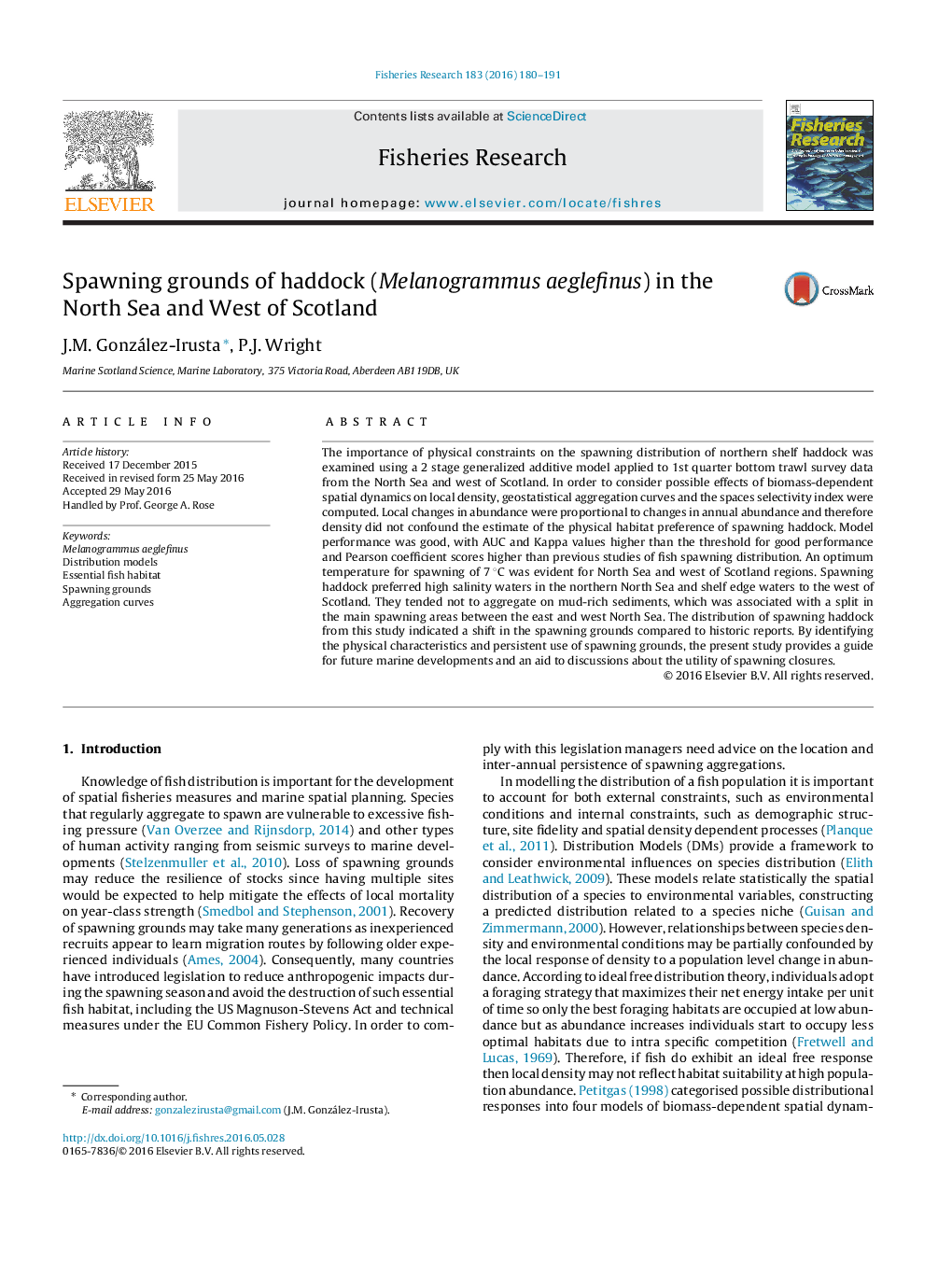| Article ID | Journal | Published Year | Pages | File Type |
|---|---|---|---|---|
| 6385178 | Fisheries Research | 2016 | 12 Pages |
Abstract
The importance of physical constraints on the spawning distribution of northern shelf haddock was examined using a 2 stage generalized additive model applied to 1st quarter bottom trawl survey data from the North Sea and west of Scotland. In order to consider possible effects of biomass-dependent spatial dynamics on local density, geostatistical aggregation curves and the spaces selectivity index were computed. Local changes in abundance were proportional to changes in annual abundance and therefore density did not confound the estimate of the physical habitat preference of spawning haddock. Model performance was good, with AUC and Kappa values higher than the threshold for good performance and Pearson coefficient scores higher than previous studies of fish spawning distribution. An optimum temperature for spawning of 7 °C was evident for North Sea and west of Scotland regions. Spawning haddock preferred high salinity waters in the northern North Sea and shelf edge waters to the west of Scotland. They tended not to aggregate on mud-rich sediments, which was associated with a split in the main spawning areas between the east and west North Sea. The distribution of spawning haddock from this study indicated a shift in the spawning grounds compared to historic reports. By identifying the physical characteristics and persistent use of spawning grounds, the present study provides a guide for future marine developments and an aid to discussions about the utility of spawning closures.
Related Topics
Life Sciences
Agricultural and Biological Sciences
Aquatic Science
Authors
J.M. González-Irusta, P.J. Wright,
